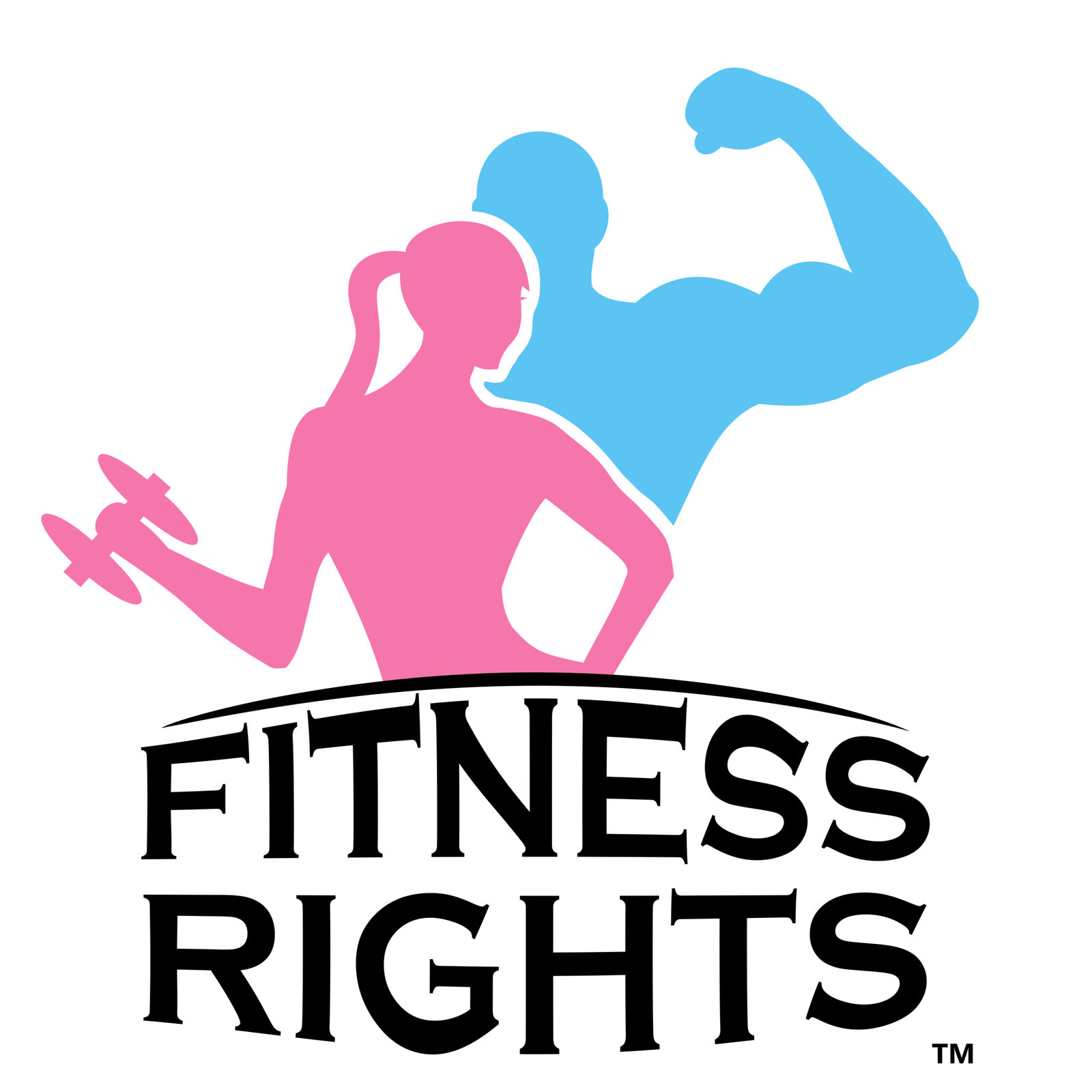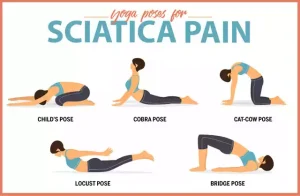Sciatica, a condition characterized by pain radiating along the sciatic nerve, can be a debilitating experience. This nerve, the longest in the body, runs from the lower back through the hips and buttocks and down each leg. When it becomes irritated or compressed, it can cause significant discomfort. Historically, treatments for sciatica have ranged from bed rest to surgery, but in recent years, yoga has emerged as a powerful tool for managing and alleviating sciatica pain.
Table of Contents
ToggleWhat is Sciatica?
Sciatica is not a diagnosis in itself but a symptom of an underlying medical condition. It often results from a herniated disc, spinal stenosis, or degenerative disc disease. The pain can vary from a mild ache to a sharp, burning sensation, and in severe cases, it can lead to numbness or muscle weakness in the affected leg.
Symptoms of Sciatica
• Pain in the lower back, buttock, and down the leg
• Numbness or tingling in the leg or foot
• Muscle weakness in the affected leg
• Difficulty moving or controlling the leg
Causes of Sciatica
• Herniated or slipped disc
• Spinal stenosis
• Degenerative disc disease
• Piriformis syndrome
• Spondylolisthesis
How Can Yoga Help with Sciatica?
Yoga, an ancient practice with roots in India, has been used for centuries to promote physical and mental well-being. For sciatica sufferers, yoga offers a non-invasive way to relieve pain and improve mobility. The gentle stretching and strengthening exercises in yoga can help alleviate pressure on the sciatic nerve, reduce inflammation, and improve overall spinal health.
Benefits of Yoga for Sciatica
• Improves flexibility and mobility
• Strengthens core muscles
• Reduces inflammation
• Promotes relaxation and stress relief
• Enhances overall spinal health
Precautions
• Consult with a healthcare professional before starting any new exercise regimen.
• Avoid poses that cause pain or discomfort.
• Focus on gentle, restorative poses.
• Listen to your body and modify poses as needed.
Best Yoga Poses for Sciatica Relief
Standing Poses

Warrior I (Virabhadrasana I)
Warrior I is a powerful standing pose that strengthens the legs and opens the hips, making it beneficial for sciatica relief. This pose also stretches the chest and shoulders, promoting better posture and alignment.
How to Perform Warrior I
1. Stand with feet hip-width apart.
2. Step your left foot back about 3-4 feet.
3. Bend your right knee, keeping it directly over your ankle.
4. Raise your arms overhead, palms facing each other.
5. Hold for 30 seconds to 1 minute, then switch sides.
Triangle Pose (Trikonasana)
Triangle Pose is excellent for stretching the spine and relieving lower back pain. It also strengthens the legs and improves balance, making it a great addition to a sciatica-focused yoga routine.
How to Perform Triangle Pose
1. Stand with feet wide apart.
2. Turn your right foot out 90 degrees and your left foot slightly in.
3. Extend your arms out to the sides, parallel to the floor.
4. Reach your right hand down to your shin or the floor, and extend your left arm toward the ceiling.
5. Hold for 30 seconds to 1 minute, then switch sides.
Seated Poses
Seated Forward Bend (Paschimottanasana)
Seated Forward Bend is a calming pose that stretches the hamstrings and lower back. This pose can help relieve tension in the lower back and improve flexibility, making it beneficial for sciatica sufferers.
How to Perform Seated Forward Bend
1. Sit on the floor with legs extended straight in front of you.
2. Inhale and lengthen your spine.
3. Exhale and hinge at the hips, reaching for your feet.
4. Hold for 1-2 minutes, breathing deeply.
Pigeon Pose (Eka Pada Rajakapotasana)

Pigeon Pose is a deep hip opener that stretches the piriformis muscle, which can often contribute to sciatica pain. This pose also helps to release tension in the lower back and hips.
How to Perform Pigeon Pose
1. Start in a tabletop position.
2. Bring your right knee forward and place it behind your right wrist.
3. Extend your left leg straight back.
4. Lower your torso over your right leg, resting on your forearms or forehead.
5. Hold for 1-2 minutes, then switch sides.
Supine Poses
Reclining Hand-to-Big-Toe Pose (Supta Padangusthasana)
This pose is excellent for stretching the hamstrings and improving flexibility. It also helps to relieve tension in the lower back and hips, making it beneficial for sciatica relief.
How to Perform Reclining Hand-to-Big-Toe Pose
1. Lie on your back with legs extended.
2. Lift your right leg and hold onto your big toe with your right hand.
3. Keep your left leg extended and grounded.
4. Hold for 1-2 minutes, then switch sides.
Bridge Pose (Setu Bandhasana)
Bridge Pose strengthens the back, glutes, and hamstrings, providing support for the lower back. This pose also helps to open the chest and improve posture.
How to Perform Bridge Pose
1. Lie on your back with knees bent and feet hip-width apart.
2. Press into your feet and lift your hips toward the ceiling.
3. Clasp your hands under your back and press your arms into the floor.
4. Hold for 30 seconds to 1 minute, then release.
Gentle Stretches
Child’s Pose (Balasana)
Child’s Pose is a gentle stretch that provides relief for the lower back and promotes relaxation. This pose is excellent for calming the mind and releasing tension in the body.
How to Perform Child’s Pose
1. Start in a kneeling position.
2. Sit back on your heels and extend your arms forward.
3. Lower your torso to the floor, resting your forehead on the mat.
4. Hold for 1-2 minutes, breathing deeply.
Cat-Cow Stretch (Marjaryasana-Bitilasana)
The Cat-Cow Stretch is a gentle flow that increases flexibility and relieves tension in the spine. This stretch is beneficial for improving mobility and reducing pain in the lower back.
How to Perform Cat-Cow Stretch
1. Start in a tabletop position.
2. Inhale and arch your back, lifting your head and tailbone (Cow Pose).
3. Exhale and round your spine, tucking your chin and tailbone (Cat Pose).
4. Repeat for 1-2 minutes, moving with your breath.
Strengthening Poses
Plank Pose (Phalakasana)
Plank Pose is a core-strengthening pose that supports the lower back and improves overall stability. This pose also strengthens the shoulders and arms, making it a great addition to a sciatica-focused yoga routine.
How to Perform Plank Pose
1. Start in a tabletop position.
2. Extend your legs back, coming into a straight line from head to heels.
3. Engage your core and hold for 30 seconds to 1 minute.
Locust Pose (Salabhasana)
Locust Pose strengthens the back muscles and improves posture, providing support for the lower back. This pose also helps to open the chest and shoulders, promoting better alignment.
How to Perform Locust Pose
1. Lie on your stomach with arms by your sides.
2. Lift your head, chest, and legs off the floor.
3. Hold for 30 seconds to 1 minute, then release.
Relevant Data Table For The what yoga poses are good for sciatica:
| Yoga Pose | Benefits for Sciatica |
|---|---|
| Warrior I (Virabhadrasana I) | Strengthens legs, opens hips |
| Triangle Pose (Trikonasana) | Stretches spine, relieves lower back pain |
| Seated Forward Bend (Paschimottanasana) | Stretches hamstrings, relieves tension in lower back |
| Pigeon Pose (Eka Pada Rajakapotasana) | Opens hips, stretches piriformis muscle |
| Reclining Hand-to-Big-Toe Pose (Supta Padangusthasana) | Stretches hamstrings, improves flexibility |
| Bridge Pose (Setu Bandhasana) | Strengthens back, glutes, and hamstrings |
| Child’s Pose (Balasana) | Gentle stretch for lower back, relaxation |
| Cat-Cow Stretch (Marjaryasana-Bitilasana) | Increases flexibility, relieves tension in spine |
| Plank Pose (Phalakasana) | Strengthens core, supports lower back |
| Locust Pose (Salabhasana) | Strengthens back muscles, improves posture |
FAQs:
Can yoga cure sciatica completely?
Yoga can be a highly effective way to manage and alleviate the symptoms of sciatica, but it is not a cure. Sciatica is often a symptom of an underlying condition, such as a herniated disc or spinal stenosis. While yoga can help relieve pain and improve mobility, it is essential to address the root cause of the condition with the help of a healthcare professional.
Benefits of Yoga for Sciatica
• Reduces pain and inflammation
• Improves flexibility and mobility
• Strengthens core and back muscles
• Promotes relaxation and stress relief
Limitations of Yoga for Sciatica
• May not address the underlying cause of sciatica
• Requires consistency and patience
• Not suitable for everyone, especially those with severe pain or mobility issues
How often should I practice yoga for sciatica relief?
Consistency is key when it comes to practicing yoga for sciatica relief. It is recommended to practice yoga at least 3-4 times a week to see noticeable improvements. However, it is essential to listen to your body and avoid overexertion. Start with shorter sessions and gradually increase the duration and intensity as your body becomes more accustomed to the practice.
Tips for Consistent Practice
• Set a regular schedule for your yoga practice.
• Start with shorter sessions and gradually increase the duration.
• Focus on gentle, restorative poses.
• Incorporate breathing exercises and meditation for relaxation.
Benefits of Consistent Practice
• Reduces pain and inflammation
• Improves flexibility and mobility
• Strengthens core and back muscles
• Promotes relaxation and stress relief
Are there any yoga poses to avoid if I have sciatica?
While yoga can be beneficial for sciatica relief, certain poses may exacerbate the condition. It is essential to avoid poses that put excessive pressure on the lower back or involve deep forward bends. Always listen to your body and modify poses as needed to avoid pain or discomfort.
Poses to Avoid
• Deep forward bends (e.g., Standing Forward Bend)
• Twisting poses (e.g., Revolved Triangle Pose)
• Backbends (e.g., Wheel Pose)
• Poses that put pressure on the lower back (e.g., Boat Pose)
Safe Alternatives
• Gentle forward bends (e.g., Seated Forward Bend)
• Gentle twists (e.g., Supine Twist)
• Supported backbends (e.g., Bridge Pose)
• Poses that support the lower back (e.g., Child’s Pose)
Can beginners practice these yoga poses for sciatica?
Yes, beginners can practice these yoga poses for sciatica relief. It is essential to start with gentle, restorative poses and gradually progress to more challenging poses as your body becomes more accustomed to the practice. Always listen to your body and avoid pushing yourself too hard.
Tips for Beginners
• Start with shorter sessions and gradually increase the duration.
• Focus on gentle, restorative poses.
• Use props (e.g., blocks, straps) to support your practice.
• Incorporate breathing exercises and meditation for relaxation.
Benefits for Beginners
• Reduces pain and inflammation
• Improves flexibility and mobility
• Strengthens core and back muscles
• Promotes relaxation and stress relief
How long should I hold each pose?
The duration for holding each pose can vary depending on your comfort level and experience. For beginners, it is recommended to hold each pose for 20-30 seconds and gradually increase the duration as your body becomes more accustomed to the practice. Always listen to your body and avoid holding poses for too long if it causes pain or discomfort.
Tips for Holding Poses
• Start with shorter durations and gradually increase the time.
• Focus on your breath and maintain a steady, even breathing pattern.
• Use props (e.g., blocks, straps) to support your practice.
• Listen to your body and avoid pushing yourself too hard.
Benefits of Holding Poses
• Improves flexibility and mobility
• Strengthens core and back muscles
• Promotes relaxation and stress relief
• Enhances overall spinal health
Conclusion:
Yoga can be a highly effective way to manage and alleviate the symptoms of sciatica. By incorporating specific poses that target the lower back, hips, and hamstrings, individuals can find relief from pain and improve their overall flexibility and strength. Always consult with a healthcare professional before starting any new exercise regimen, especially if you have a pre-existing condition like sciatica. For more information on sciatica pain relief, visit IBJI and Spine-Health.
Posts References:
5 Gentle Yoga Poses and At-Home Remedies for Sciatica Pain Relief
Best Yoga Poses for Sciatica Relief – Spine-health







